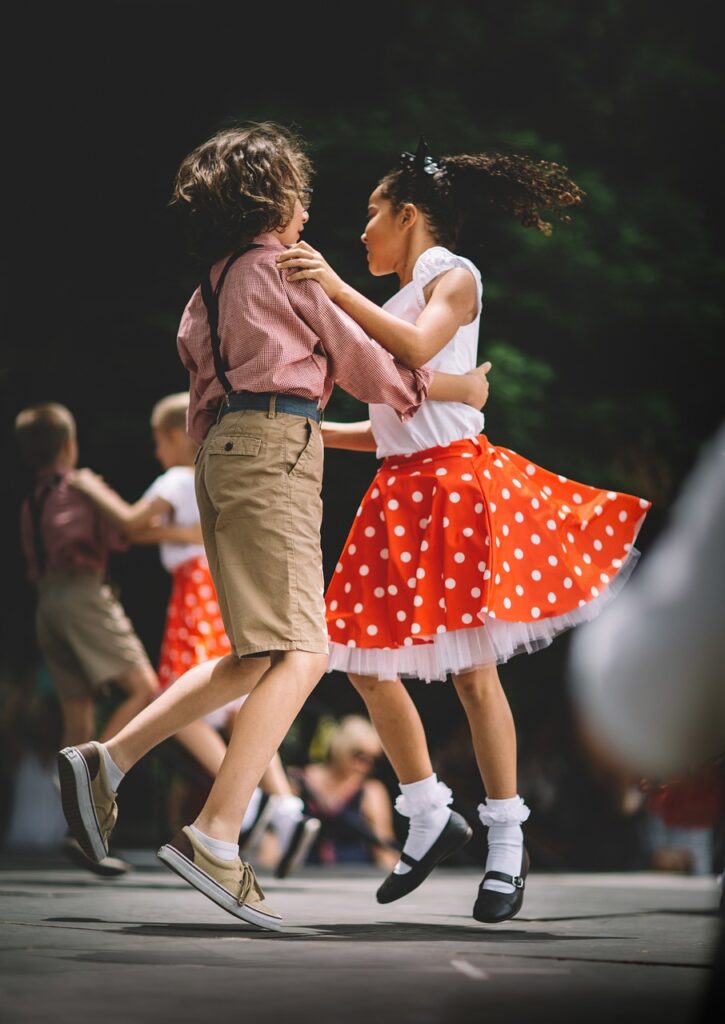Classical dance, an ancient and culturally rich form of artistic expression, has evolved over centuries to become an integral part of the world’s diverse cultural heritage. With its intricate footwork, graceful movements, and powerful storytelling, classical dance represents not just physical artistry, but a connection to history, tradition, and emotional depth. In this blog, we will explore the world of classical dance, its significance, different forms across cultures, and why this art form continues to captivate audiences around the world.

What is Classical Dance?
Classical dance refers to a traditional form of dance that adheres to a set of established techniques, movements, and often, storytelling traditions. These dances are typically rooted in ancient rituals, cultural narratives, and spiritual practices, which have been passed down through generations. Unlike contemporary dance, which tends to emphasize individual expression and spontaneity, classical dance is deeply structured, with an emphasis on precision, discipline, and form.
At its core, classical dance is a way to communicate emotion, story, and culture through movement. Whether it’s the delicate gestures of Bharatanatyam or the grand, sweeping movements of Ballet, classical dance forms have a universal language that transcends barriers of time, geography, and language.
The Significance of Classical Dance
Cultural Preservation
Classical dance serves as a living record of the culture, traditions, and values of the societies from which they originate. Each step, gesture, and movement carries with it the essence of the history, religion, and mythologies of a particular region. For instance, in India, classical dance forms like Bharatanatyam, Kathak, Odissi, and Kuchipudi are not only forms of artistic expression but also preserve stories from Hindu mythology and epics like the Ramayana and Mahabharata.
Spiritual Connection
Many classical dance forms, particularly those originating from India and Southeast Asia, have spiritual or religious significance. These dances were once performed in temples or at sacred rituals to honor deities or convey divine stories. For example, Bharatanatyam, often performed in Hindu temples, is believed to be a form of worship, where the dancer embodies both the divine and the earthly.
Emotional Expression
One of the most captivating aspects of classical dance is its ability to convey deep emotions without the need for words. The use of facial expressions (known as “abhinaya” in Indian dance forms) and precise body movements allows the performer to tell a story and evoke emotions like love, joy, sorrow, or anger. This emotional depth is central to the experience of classical dance, making it a truly immersive art form.
Different Classical Dance Forms Around the World
Classical dance forms vary significantly from one culture to another, each bringing its own unique set of techniques, aesthetics, and storytelling traditions. Let’s take a closer look at some of the most famous classical dance forms from different regions of the world.
1.Ballet (Western Classical Dance)
Ballet is perhaps the most well-known classical dance form in the Western world. Originating in Renaissance Italy and later developing in France and Russia, ballet is characterized by its graceful, highly structured movements, elaborate costumes, and use of pointe shoes. Ballet dancers undergo years of rigorous training to perfect techniques like pirouettes, arabesques, and grand jetés, which require incredible strength, flexibility, and precision.
Ballet is often used to tell both narrative and abstract stories. Famous ballet productions such as Swan Lake, The Nutcracker, and The Sleeping Beauty are timeless examples of how ballet blends storytelling with artistic movement.

2. Bharatanatyam (Indian Classical Dance)
Bharatanatyam is one of the oldest and most revered classical dance forms from India. Originating in Tamil Nadu, it has deep connections to Hindu temple rituals, where it was performed as an offering to the gods. Bharatanatyam is known for its graceful movements, intricate footwork, and expressive hand gestures (mudras). The dance is often accompanied by Carnatic music and involves storytelling, primarily focusing on themes of devotion and mythology.
Bharatanatyam is highly technical, with emphasis on posture, balance, and rhythm. It is traditionally performed solo by female dancers, although male dancers also participate in the modern-day performances.
3. Kathak (North Indian Classical Dance)
Kathak is another prominent classical dance form from India, but unlike Bharatanatyam, it has roots in the northern region of the country. Kathak is characterized by fast footwork, spins (known as “chakkars”), and rhythmic storytelling. Traditionally, Kathak was performed in royal courts to narrate stories from Hindu mythology, but it evolved over time to include Persian and Mughal influences.
Kathak dancers are trained in complex rhythmic patterns (known as tala) and develop an intricate relationship with the accompanying music. Like Bharatanatyam, Kathak also uses facial expressions and hand gestures to convey emotions and tell a story.
4. Odissi (Indian Classical Dance)
Originating in Odisha, a state in eastern India, Odissi is one of the eight classical dance forms of India. Known for its fluid movements, graceful poses, and intricate footwork, Odissi is often considered one of the most feminine of the Indian classical dance forms. Odissi performances are accompanied by Odissi music and incorporate themes of devotion to the Hindu gods, particularly Lord Krishna.
The unique feature of Odissi is the “tribhangi” posture, which involves a three-fold bend in the body, symbolizing youth, beauty, and grace. This posture is used to convey delicate emotions through controlled movement and expression.
5. Chinese Classical Dance
Chinese classical dance has a long history, with roots stretching back over 5,000 years. This dance form combines technical movement with Chinese opera and traditional martial arts. The elegance of the dance is complemented by traditional costumes and elaborate choreography, which often focuses on Chinese legends, folklore, and historical events.
A key feature of Chinese classical dance is its emphasis on balance, poise, and flexibility. Like other classical dance forms, it also includes specific gestures and facial expressions to enhance the storytelling.
6. Kabuki (Japanese Traditional Dance)
Kabuki is a form of traditional Japanese theater that incorporates dance, drama, and music. While it is technically more of a theater art, the dancing in Kabuki is highly stylized and forms an integral part of the performances. The dance movements are often slow, exaggerated, and symbolic, with dramatic facial expressions adding to the emotional intensity.
Kabuki emerged in the early 17th century and has remained a central part of Japanese culture, evolving into various forms over time.

Why Classical Dance Matters in Today’s World
Despite the rise of modern dance styles and the digital revolution, classical dance continues to thrive, bringing an unparalleled depth of artistry and cultural pride. Here’s why classical dance is still relevant today:
1. Cultural Heritage and Identity
In a rapidly globalizing world, classical dance serves as a reminder of a community’s cultural roots and traditions. As countries around the world strive to preserve their unique identities, classical dance forms become a vital link to the past and an expression of cultural pride.
2. Aesthetic Appeal and Entertainment
Classical dance, with its elegant movements and intricate technique, is still a source of immense aesthetic pleasure for audiences worldwide. From the delicate footwork of Bharatanatyam to the dramatic spins of ballet, classical dance offers a refined form of entertainment that continues to captivate people of all ages.
3. Physical and Mental Discipline
Classical dance requires years of practice, fostering discipline, focus, and physical fitness. Dancers develop strength, flexibility, and coordination through repetitive training and mastery of complex movements. It also helps in enhancing memory, concentration, and emotional intelligence, making it an all-encompassing form of art.
4. Cross-Cultural Connection
Classical dance has the unique ability to bridge cultural gaps. While each form is deeply rooted in its own traditions, the universal themes of love, struggle, devotion, and human emotions make classical dance an art form that resonates across boundaries. International collaborations, festivals, and performances allow people from different cultures to experience the beauty of classical dance, fostering understanding and appreciation.
Conclusion: The Enduring Magic of Classical Dance
Classical dance continues to captivate audiences around the world with its blend of technique, storytelling, and emotional depth. Whether it’s the elegance of ballet, the devotion in Bharatanatyam, or the intricate storytelling of Kathak, classical dance offers a timeless connection to culture and tradition. As the world continues to change, these dance forms remind us of the power of movement as a universal language, capable of bridging past and present, tradition and innovation.
By preserving these art forms and celebrating their beauty, we ensure that the magic of classical dance endures for generations to come.
4o mini